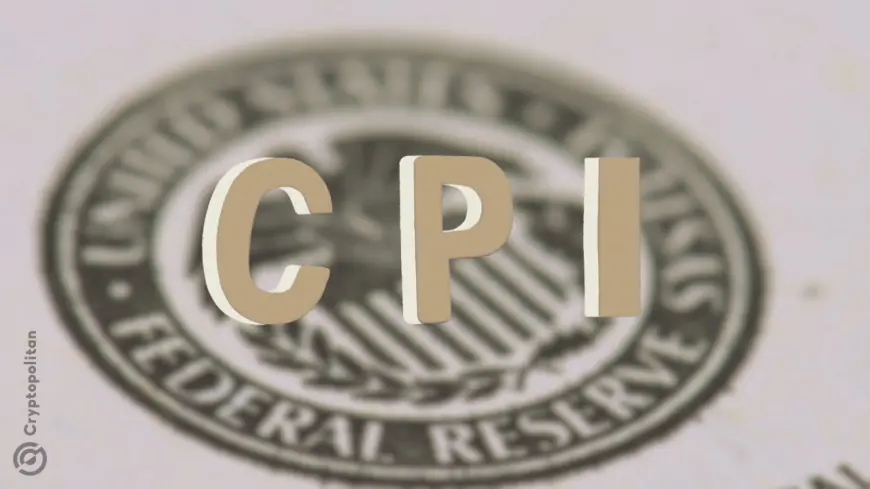CPI strength makes the Federal Reserve’s rate outlook uncertain
Later today, the BLS will release its latest consumer price index (CPI) numbers, and economists are bracing for a third straight month of solid inflation growth.

The Federal Reserve’s outlook on interest rates is up in the air as inflation keeps rolling strong. Later today, the Bureau of Labor Statistics (BLS) will release its latest consumer price index (CPI) numbers, and economists are bracing for a third straight month of solid inflation growth.
They’re forecasting that the core CPI—an index that strips out volatile food and energy prices—will tick up by 0.3% for October. Meanwhile, the broader CPI is expected to climb by 0.2%.
This comes right after a few interest rate cuts aimed at cooling things down. In September, the Fed made a half-point cut, followed by a quarter-point cut just last week. But as inflation keeps proving hard to shake, those rate cuts might be on hold, at least for now.
Investors seem to agree, as the odds of another rate reduction in December have dropped to around 60%, down from 80% before last week’s presidential election on the CME’s FedWatch tool.
Rents rising, but for how long?
The main driver behind the CPI? It’s rent—or more specifically, “owners’ equivalent rent” (OER), the single biggest factor in setting the CPI’s underlying trend. If you rent or own a place, you probably don’t need a news flash to know that rents have been going up all year. This OER measure jumped earlier in the year, peaking in July and August before cooling down a bit in September.
But that cooling-off period might be short-lived. Diego Anzoategui and his crew of economists at Morgan Stanley see another slight rise in October, though they think the downward trend could kick back in soon enough.
They said, “September’s OER was likely downward biased by seasonal factors, and we don’t expect a similar bias this print.” Translation: rent inflation could be tricky this time around, but long-term indicators suggest it’s cooling. In plain speak, if you’re tired of sky-high rents, maybe—just maybe—there’s some light at the end of this tunnel.
But, if you’ve been watching new lease rates and renewal costs, you’d know these numbers look a little better than the housing CPI. With inflation refusing to cool down fast enough, no one at the Fed is banking on a rental miracle just yet.
Hurricanes and hotel rates: A stormy mess
Now, even if rent inflation doesn’t skyrocket, the economists believe lodging prices might. Blame it on hurricanes—Helene and Milton to be exact. These recent storms forced people in their paths to flee their homes and seek shelter in hotels, adding pressure to the lodging-away-from-home component of the CPI.
Hotel rooms are a smaller piece of the inflation puzzle, but in areas hit by the storms, demand shot up. More demand for hotel rooms means higher rates, and higher rates could put even more heat on the inflation numbers.
Pooja Sriram and Marc Giannoni at Barclays put it like this: “We forecast an increase in lodging-away-from-home prices based on high-frequency data on average room rates.” Costar reports have shown increased demand in the Southeast in October, thanks to hurricane displacement.
The Bureau of Labor Statistics typically adjusts hotel prices to account for lower fall demand after the summer peak. But if prices hold strong or even rise, they could skew those seasonally adjusted numbers, making it look like hotels are getting more expensive just as other areas of the economy are, well, supposed to be cooling off.
The dollar dominates, and Wall Street’s ready for more
Meanwhile, the dollar is flexing its muscles, and Wall Street is paying attention. A week after the presidential election, the dollar is stronger than it’s been in a year, causing chaos in the currency market.
Major currencies like the euro, yen, and Canadian dollar are weakening against the dollar, hitting psychological thresholds that could shake up global markets.
The DXY, which tracks the greenback against a basket of global currencies, rose for a third-straight session this week, hitting its highest level since 2022. JPMorgan’s Meera Chandan said, “The election outcome amplifies the US dollar exceptionalism.”
She added that “no other currency has what the dollar has: superior growth and equities, higher yield, defensive attributes.” The post-election sentiment is all it’s taken to get the dollar climbing, with traders banking on it to push higher as much as 7% in the coming months. That might mean the euro hits parity with the dollar, and China’s yuan could near 7.40 to the dollar.
Goldman’s Kamakshya Trivedi agrees. For him, it’s all about policy proposals driving the dollar up. But even with tariffs looming, he believes the strength isn’t guaranteed and might hinge on other countries’ responses.
Options data and the latest positioning reports show that markets expect the dollar to keep climbing. In fact, bullish sentiment on the greenback over there is now at its strongest since July.
And hedge funds? They’ve jumped on the bandwagon, increasing net long dollar exposure in the lead-up to the election, according to the Commodity Futures Trading Commission (CFTC).
What's Your Reaction?









































































































